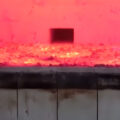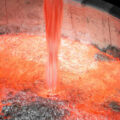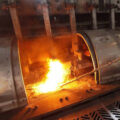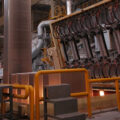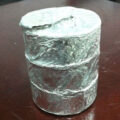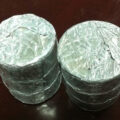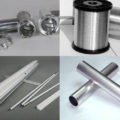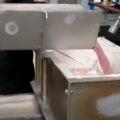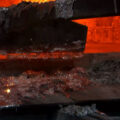Aluminum alloy melting point of metal Mg is 649 ℃, the ignition point of Mg is 500 ℃, which is much lower than the melting point of aluminum 660 ℃. Therefore, during the aluminum alloy smelting process, the metal Mg is easy to burn in the atmosphere of the aluminum smelting furnace, resulting in Mg Burned. The metal Mg must be added in the final stage of the smelting feeding process. The molten pool is all liquid metal. The Mg ingot is immersed in the molten aluminum and the Mg melts quickly in order to reduce the burning loss of Mg. Otherwise, if the metal Mg is added too early, the amount of metal burning will increase, resulting in insufficient Mg content in the liquid metal, which cannot meet the requirements of the strength and performance of the Al-Mg alloy. Also, the Mg ingot cannot be directly heated and melted by the flame, otherwise it will cause Mg burning. The damage is serious and affects the control of chemical composition.
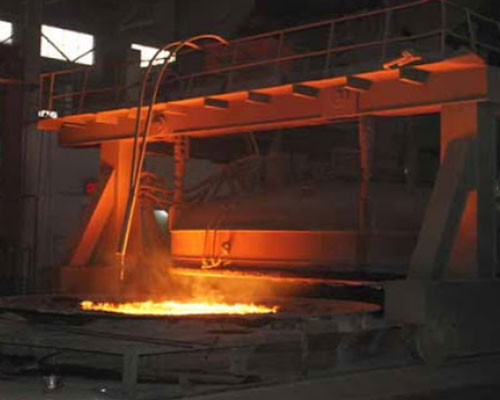
For alloying element additives, including iron, manganese, chromium, etc., since the additives contain many kinds of fluxes, the melting rate of alloying elements in molten aluminum is increased. Therefore, the alloy element additives need to be added to the molten aluminum according to the proportion of the alloy elements after the charge in the melting furnace is melted. If the alloying element additives are added to the melting furnace at the beginning of smelting, on the one hand, the burning loss of the alloy elements will be increased, and on the other hand, part of the alloy elements will be lost with the slagging operation and other processes, resulting in unqualified alloy composition of the charge.
The raw materials added in the smelting process include aluminum ingots, aluminum plate trimmings, casting waste, and alloy element additives. The principle of the feeding process is: first add low-density raw materials, and then add high-density raw materials. For the 85t large-scale smelting furnace, the smelting process mainly uses jet heating, which relies on the radiation of flame heat to heat the material.
In the process of smelting high-density raw materials, the heat radiated by the flame is only concentrated on the surface of the raw materials, which increases the difficulty of the raw material smelting process. However, the low-density raw material has a larger exposed surface, and the flame radiates more heat to the raw material surface, and the melting rate is faster. At the same time, due to the large exposed surface, the smelting burning loss is large. For raw materials with lower density, if they are added to the smelting furnace first and covered with dense aluminum ingots or casting waste, the low-density raw materials will not be exposed to the range of flame radiation, reducing smelting burning loss, and aluminum The liquid metal melted by the ingots and foundry scraps soaks the trimmings, so that the trimmings and materials with low density are quickly melted, and the energy consumption of smelting is reduced.
For dense aluminum ingots and casting scraps, if the feeding sequence is not appropriate, these materials will be immersed in the molten aluminum, and the heat radiated by the flame can hardly be transferred to these materials through the molten aluminum, which will prolong the smelting time and increase the smelting energy consumption. Moreover, these materials can only be melted by increasing the temperature of the molten aluminum, and the excessively high surface temperature of the molten aluminum causes the molten aluminum to overburn.
In order to save the energy consumption of smelting, the electrolytic aluminum liquid can be directly added to the smelting furnace. However, the adding time of the electrolytic aluminum liquid needs to wait for a certain amount of molten aluminum liquid in the melting furnace to be added. If the electrolytic aluminum liquid is added too early, there may be a certain amount of water on the surface of the solid material added in the smelting furnace, or the water may accumulate at the bottom of the smelting furnace. After adding the electrolytic aluminum liquid, it is prone to explosion hazard. If the electrolytic aluminum liquid is added too late due to the high temperature of the electrolytic aluminum liquid itself, usually reachesing about 830℃, the high aluminum alloy melting point in the melting furnace is not conducive to the grain refinement during the casting process and affects the mechanical properties of the product.

